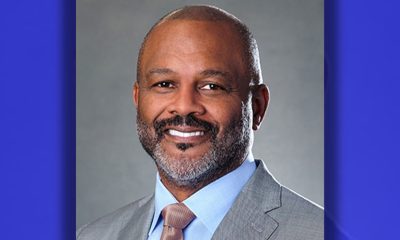Business
Most Americans Not Prepared for Retirement


President Barack Obama delivers the State of Union address before a joint session of Congress in the House chamber Tuesday, Jan. 28, 2014, in Washington, as Vice President Joe Biden, and House Speaker John Boehner of Ohio, applaud. (AP Photo/Larry Downing, Pool)
by Jazelle Hunt
NNPA Washington Correspondent
WASHINGTON (NNPA) – Seventy-five million working Americans do not have a retirement plan, and half of all Americans have less than $10,000 in savings, according to a report by the Senate Health, Education, Labor and Pension (HELP) Committee.
It’s even worse for African Americans and other people of color.
According to a December report from the National Institute on Retirement Security, the typical retirement account-owning household of color has a balance of $23,000, which is less than half the $50,500 median balance of White households with retirement accounts.
By the HELP Committee’s estimates, the retirement income deficit is between $6.6 and $14 trillion.
Some in Washington seems to have taken notice.
In the latest State of the Union address, President Barack Obama unveiled the myRA program, which allows workers to build tax-free nest eggs from federal savings bonds. At the legislative level, Senator Tom Harkin (D-Iowa) introduced the Universal, Secure, and Adaptable (USA) Retirement Funds Act, which will create private (but federally supervised) universally accessible retirement plans.
“The retirement crisis is worse than most people realize,” Senator Harkin said in an interview with USA Today. “Most people just won’t be able to maintain their standard of living in retirement, and they will lean more and more on their families and the social safety net.”
Both systems address the retirement crisis by establishing portable, automatic payment accounts that can supplement Social Security and other retirement plans. Both systems use employers as a middleman; employers that do not already offer benefits will be required to offer the system to employees, and will link the employees to the system via automatic payroll deductions. In both systems, the employers neither access/manage their employees’ retirement funds, nor are they required to contribute to any accounts.
Despite these similarities, the systems are fundamentally different.
The USA Retirement Fund Act is the result of a two-year study of the retirement crisis by the Senate HELP Committee and its Chairman, Senator Harkin. Under this act, private entities (such as non-profits, trade organizations, financial institutions, etc.) could start their own retirement fund accounts, with approval and regulation from the Department of Labor. Approved accounts would be designated USA Retirement Funds. The private entity would choose its own independent, qualified board trustees (who would also be federally investigated and approved) to manage the funds.
The trustees would be required to disclose their fund’s performance, fees, and policies each year, publicly and directly to its members. Members would be able to petition the trustees and approve or disapprove of its actions and its compensation. Members would also have the option to move their savings to other USA Retirement Funds at the end of each year, and can also roll funds from other retirement plans into their account.
Employers offering this option would automatically enroll workers at a 6 percent deduction from their paychecks – workers have the option to increase or decrease the deduction, or opt out of the program entirely. Employers also have the option to contribute to their workers’ accounts, but are not required to do so.
All contributions are tax-deductible (up to $10,000 per year for employees, and up to $5,000 per year per employee for employers). Low-income individuals would be eligible for a refundable savers credit. The self-employed and those who work at businesses with 10 or fewer employees would be able to sign up for a USA retirement fund account as individuals.
Finally, the funds’ benefits would be paid monthly, seamlessly replacing retirees’ paychecks. They would also come with survivor benefits and spousal protections. Trustees would be charged with protecting retirees from market volatility and the risk of outliving their savings.
“President Obama’s myRA proposal is a great first step to help more people – especially lower-income individuals – save for retirement,” Senator Harkin said. “He deserves a lot of credit for focusing on the retirement crisis, but the President has limited tools. Congress needs to act, which is why I introduced the USA Retirement Funds Act. My bill would ensure that everyone has the opportunity to earn a secure and portable retirement benefit that they can’t outlive.”
The program, billed as a starter fund aimed at low- and middle-income workers with no access to retirement plans, is open to any household making less than $191,000. It operates like a Roth IRA account, except the accounts only invest in government savings bonds. Initial investments start as low as $25, and payroll contributions as low as $5.
Like a Roth IRA account, the funds can be withdrawn, tax-free. Unlike a Roth IRA, the savings can be transferred to a private retirement account (only after it hits $15,000), and the account earns interest at the same rate as federal employee pension accounts. The savings are also principal-protected, so even if the market gets volatile, the balance will never decrease.
People will only be able to enroll via their employers, who must offer the option if they do not already have retirement provisions. Although myRA is a Treasury Department program, the department will select a private firm to manager the program.
In addition to the myRA, Obama will attempt to address retirement concerns via legislation with an “auto-IRA” plan built into the federal budget. Under this proposal, all workers without retirement access will be automatically enrolled in a payroll deduction-based IRA account. The auto-IRA proposal also seeks to make retirement tax benefits more effective for the middle class.
According to a White House fact sheet, “an estimated two-thirds of tax benefits for retirement saving go to the top 20% of earners, with one-third going to the top 5 percent of earners.” Obama has included the auto-IRA in all of his budget proposals since taking office.
President Obama signed the presidential memorandum to instate the myRA program on January 29, at a U.S. Steel Corp. plant outside Pittsburgh.
“Today, most workers don’t have a pension in America. Just half work for an employer that offers any kind of retirement plan. A Social Security check is critical, but oftentimes that monthly check, that’s not enough. And while the stock market has doubled over the last five years, that doesn’t help somebody if you don’t have a 401(k),” he said, addressing the crowd of steel workers. “But what [myRA’s provisions] means is for those of you who don’t have a 401(k) on the job, don’t have a pension on the job, don’t have a mechanism to start saving – especially younger workers – you can get started now. And in an emergency, you can withdraw contributions without paying a penalty. So it’s a pretty good deal.”
The White House is inviting employers to register for the pilot myRA program, which is slated to begin in 2015. The USA Retirement Fund Act still has to be voted on and passed by Congress.
“One of the clear messages here is we all have to start thinking about how we can get ready for retirement, and what’s an attractive way to do that. I think [these bills] respond to what we’ve heard from workers in NIRS’s surveys,” says Diane Oakley, executive director of the National Institute on Retirement Security. “And I think what this will say to workers is, the government is starting to think about this important issue. These are nice proposals in the sense that they give you simple and concrete ways to start to take some first steps to saving, learn how it works, hopefully continue to save, and save more in the future.”
###













































